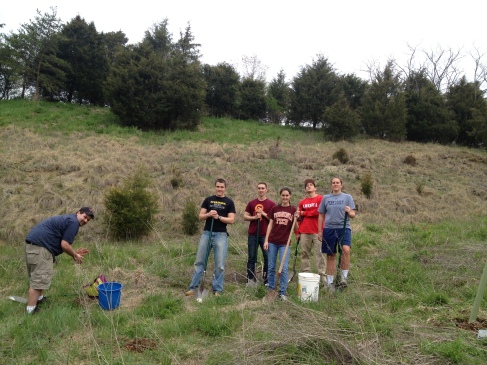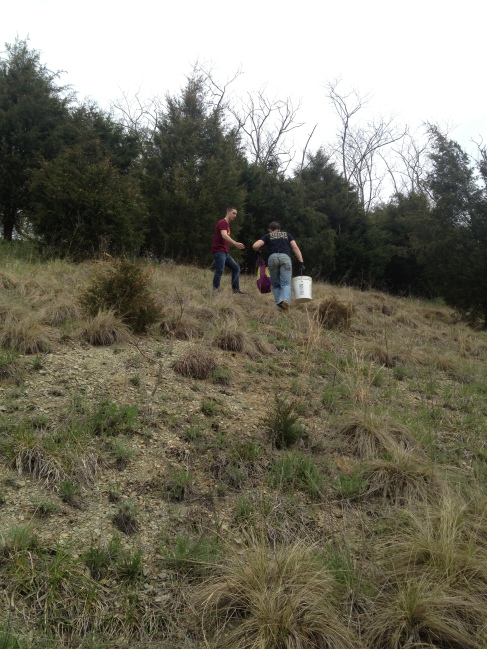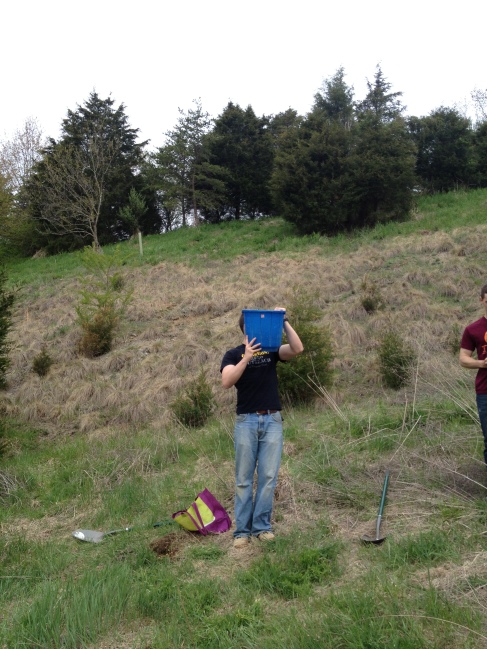Hidalgo's Research
Friday, October 25, 2013
Preserving A Part of Puerto Rican History – The “Cuatro”
Citizen G!
Citizen G!
[caption id="attachment_448" align="aligncenter" width="252"]
 Jonathas Granville on the New Brunswick, NJ, incident.[/caption]
Jonathas Granville on the New Brunswick, NJ, incident.[/caption]This is a remarkably revealing and yet amusing news document. The context is Jonathas Granville’s visit to the United States for the purpose of offering Blacks in the United States social dignity through the extraordinary political right of citizenship. He had been sent in a hurry with the mission of luring at least 6000 immigrants to Hayti (Haiti). He was arguably the first Haitian (unofficial) ambassador to the United States. The incident in reference took place just days after arriving to the US.
In early July 1824, as Granville traveled from Philadelphia to New York he stopped in New Brunswick, NJ, just a few miles from Staten Island. Here, a US Southern military officer made a horrid spectacle when noticing that Granville, a person of color, was sitting on the same table. His tirade made it known, in no uncertain terms, how he felt about eating with a non-White.
The startled Haitian visitor wisely replied, not to the argument of racial inequalities that underpinned the southerner’s reaction, but to his demeanor instead. Granville calmly explained that the aggressor’s shameful manners were unknown to him and his people back in Haiti. He had never been mistreated in public like this, but, since he was in a foreign country, he would follow the customs of the land. So, rather than to continue an open public confrontation, Granville simply moved his plate to another table.
His group of White companions, in defiance, immediately abandoned the racist offender and deliberately joined Granville’s table. The story promptly hit the Northern newspapers to become fodder for Southern bashing. The abolitionist vocal minority also used this scene to showcase what they perceived as evidence of nobility and humanity in Blacks, which contrasted with southerly arrogance and intolerance. For Granville, this painful experience gave him an insight into the struggles of the so called free Blacks living in the northern states.
The attached news story, dated a few days after the incident, is Granville’s reply to a previous piece published in the same paper to defend his public honor. Much is explained here about Haiti, US abolitionists, and of Granville himself. What I find amusing is how the translator struggled to convey Granville’s French prose into English, a fact admitted on a note at the bottom. What might pass inadvertently is the way the translator referred to Granville, a refined and high-ranking officer of the Haitian Government. The translator called Granville, Citizen G!
It is hard not to wonder if this renaming of Granville was the result of the already common US practice of shortening names, an expression of endearment, or perhaps just an example of the pervasive (“subtle” in this case) contempt towards persons of color. It could also have been an editorial restrain since the story was running out of space. Certainly, a combination of some of these factors could have played a role in thrusting Granville’s name into the future. As Citizen G, Granville seems more like a present-day stylish figure with a trendy name, a pop star, a media darling. Or perhaps today he could have been a special government agent. But in fact, in 1824 he was both: a special agent of the Haitian government and the new darling of the US northern press (particularly of the abolitionists papers).
In the coming months, Citizen G would, in fact, become the center of attention among some Northerner readers. The sympathizing White press would admire his genteel manners, eloquent speech and the broad knowledge he appeared to command, and some would see in him the Black “messiah" that could spark an enthusiasm for self-improvement among less refined US Blacks. The subtext was the belief that slavery and the pernicious White racial prejudice have rendered US Blacks phlegmatic and unambitious. Little did they seem to know of the more numerous Black leaders among them. These unnamed US Blacks have long struggled against a racial oppression to which Granville could only relate partially.
Citizen G may have remembered how in Saint Domingue White colonists considered Gens de couleur like him as inferiors, and how Napoleon Bonaparte’s 1802 scheme would have relegated him to a secondary level citizen. But the Haitian emissary had never been enslaved or even a potential kidnapped prey for mercenary enslavers. His formal education, military training, and experience in high government posts placed him apart from the bulk of population in any Atlantic city of the time. Citizen G was used to command respect from Blacks and Whites alike. And his message to the US was indeed going to attract the attention and elevate hopes among African Americans. But not because US Blacks needed to be prodded for self-improvement. Citizen G’s message stroke cords among US Blacks because it was their own message too.
Reference: Boston Recorder (1817-1824); Jul 10, 1824; 9, 28
This is the link to the full news article:
Granville Forgives
Monday, April 29, 2013
Carolyn Cooper: Changing Dirty Diapers On Earth Day
Reblogged from Repeating Islands:

Carolyn Cooper defends the Earth in his latest column for Jamaica’s Gleaner.
Last Monday was Earth Day, and one of the big issues environmentalists took up is the foul problem of disposable diapers. We really do have to go back to the good old days of reusable cloth diapers. Remember those bright white nappies on the clothes line, fluttering in the breeze?
Saturday, April 27, 2013
Haiti: 'I regret that clean water is so expensive'
Third day at Toms Creek Park, Planting Trees-- Global Arbor Day
Third day at Toms Creek Park, Planting Trees– Global Arbor Day
Today, Saturday April 27, 2003, when Arbor Day is celebrated throughout the world, a group of Virginia Tech students went to Toms Creek Park to plant trees. This was the third group at this place, but the fourth to take part on this year’s Arbor Day activities. Here are the links for earlier ones: April 26, April 25, April 20
On this post you will find a local-paper slideshow featuring our students in Arbor Day.
We began promptly at 9AM with a review of the purposes behind this project. In short, they are to encourage civic duty and to aid in learning about other social ethos, particularly as it is with the Haitian combites. Then we went through the planting instructions, and set the goal of planting at least 4 trees per group. We did not sing, as people in some combites do, but we talked a lot, and while a few arrived sluggishly, as if they had dragged themselves out of bed, in about half an hour, they were all energized.
Just after an hour, most groups had planted way more than four threes. So, we began closing down, and as we got ready for the group-picture, two students attempted to carry a water bucket on their heads, as women in Haiti and in other parts of the world, commonly do. They idea was of putting ourselves in the position of others and appreciating the value of water and its transportation. Of the two that tried, only one was able to balance the water bucket on her head.
Afterward, we went for breakfast together, and we closed down with a discussion about the value of free time versus hands-on labor (“cleaning after yourself”). This was done in the context of what pro-slavery writers and abolitionists debated throughout the entire Americas during most of the 19th century. We reflected on how this same issues are part of our current social and political discussions.
Friday, April 26, 2013
Second day at Toms Creek, Planting Trees
This is the second group planting trees at Toms Creek Park. The new tree samplings are now being spread about on the hill where we want to attract wild life and stop the erosion. We began with a small talk about the purposes of this event, an introduction to the combite and instructions of how to plant the new trees. We divided the volunteers in groups of two, and each planted about 4-7 trees per group. As evidences of the old dumping ground today we found two golf balls, a brush and other left overs of the trashy past.























